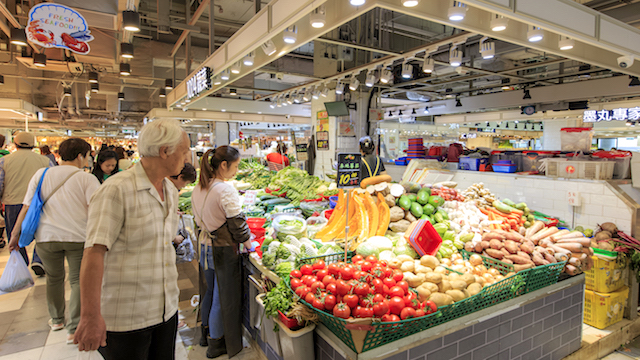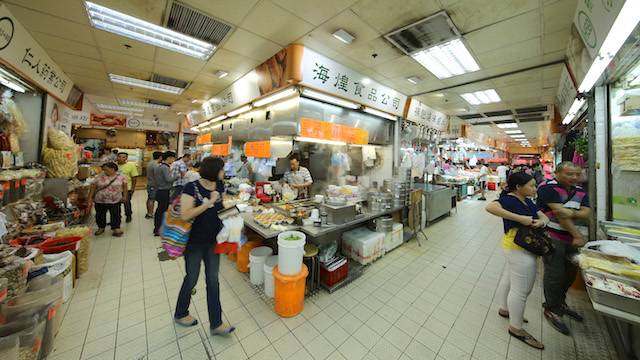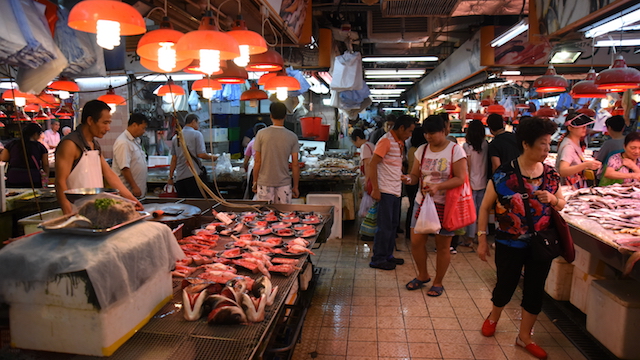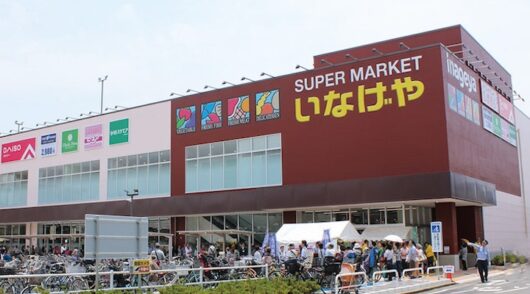Hong Kong’s wet markets have long held a reputation as being places best avoided ‒ especially by the territory’s expatriate population and younger generations of Chinese.
But Link Asset Management (Link) is out to dispel that image, progressively converting dark, hot, smelly wet markets with saturated floors and cluttered aisles into desirable destinations to shop for fresh fish, meats and produce.
And its program has met with immediate success: customer footfall has risen, stall-holder sales have in many cases doubled, and now retail property managers from the mainland and beyond are visiting Hong Kong to see how they can also make their markets desirable.
Link inherited about 100 wet markets from the Housing Authority in 2005. They were essentially considered public amenities, usually attached to apartment complexes. Many of the smaller markets have since been divested, leaving a portfolio of 61. Of these, 33 have been overhauled.
Completed this year and featured in the accompanying photographs, the market at TKO mall is one of the latest conversions.
Evolution, not planning
Such is the nature of traditional wet markets they have evolved over time rather than being planned. Tenants took space where they found it, leading to a mixture of meat, vegetables, fish and dry goods. No-one took a bird’s-eye view of the trade mix to ensure a balance of products being sold. No-one enforced rules on stalls encroaching into the aisle, often leading to stacks of cartons blocking thoroughfares. Drainage was often through grates in the floor, and shoppers walked water and detritus throughout the market.
Post revamp, markets like the one at TKO Mall barely resemble the traditional approach. The mall’s management team ensures all stock is stored and displayed within the confines of each retail space, which means people in wheelchairs and mums with strollers can now negotiate the aisles.
All the meat and fish stalls are grouped together with proper drainage systems in place. Should there be a splash on the tiled floor, a cleaner soon arrives to mop it up.
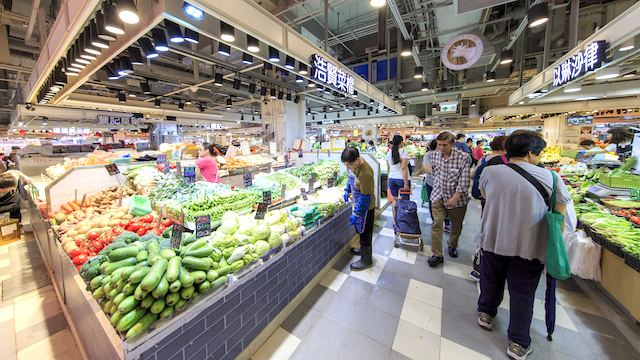
With the ceilings removed, exposing services and new lighting, rows of non-directional fluorescent lamps have been replaced with downlights highlighting fresh food.
And while retailers previously stacked products on shelves at the rear of their lot, there is now open space so customers can scan across rows of vendors to easily find where different foods are sold. It greatly improves a customer experience that previously must have felt like being stuck in a maze.
Aircon and AliPay
Air conditioning has been installed in all but a couple of the refurbished markets, those which are open air being the exception, and electronic payments have been introduced via AliPay or Octopus card.
The end result is a convenient, light, bright, clean, fresh-smelling environment much more like markets in London or Spain which, in fact, were part of the inspiration for Link’s team.
Markets are part of the company’s DNA, Link Hong Kong director of asset management Peionie Kong tells Inside Retail Hong Kong.
“We are different to the other landlords in Hong Kong because other retail landlords don’t have fresh markets within their portfolios, or within their shopping centres. We have fresh markets because we inherited the entire portfolio from the Housing Authority. And we treat fresh markets as a very important anchor to draw daily traffic.
“Fresh markets are a major magnet. If we do them better, we can attract shoppers from our secondary catchments. So if fresh markets do well, our shopping centres can benefit.”
The asset-enhancement program goes back to 2010. After two years’ research, Link opened a rejuvenated market at Tai Yeun Market at Tai Po to test the format. A year later the program started rolling out.
Tenancies planned
Among the key early decisions was to plan the market tenancies, says Kong. “Previously we had fresh meat and fresh seafood stores scattered all over the market. Now we put them all together so they are near the loading space.” That helps reduce water and waste on the aisle floors from leaking crates or ice melting on trolleys.
It was challenging at first to “sell” the plan, especially as many market vendors had been running their stores for 20 or 30 years, and through successive generations.
“In our very first project we needed to do a lot of local lobbying. We needed dialogue with local politicians and, in the past, there were merchant associations,” says Kong.
“No-one knew what they were going to get,” says Link’s director of corporate affairs and marketing Aubrey Ho. “It was going to be a completely new concept. There were a lot of complicated negotiations and explanations.
“Some were quick to come on board, but you are always going to get some kind of die-hard fans of the past.”
Easier to sell
Ho says Link persevered, painting a clear picture of what was envisaged. Nowadays, after 33 markets have been transformed, it is far easier to sell the upgrade to existing tenants. Before renovations, Link staff members take tenants and community leaders to show them revamped markets.
“It is getting easier, but obviously communication is very important as well as managing expectations,” says Kong.
It helps that the results to date make a compelling argument. Post revamp, footfall increases by between 40 and 70 per cent, plus the length of time a shopper visits a market has increased by 53 per cent … because they are actually pleasant places to shop, rather than claustrophobic, crowded, cluttered, dark, damp spaces. The occupancy rate is always close to 100 per cent.
For the retailers, sales are up from between 30 per cent to double.
“We are attracting more younger-generation customers into our markets,” says Kong. “Customers in their 30s are up 76 per cent. Millennials previously went to supermarkets, but now they find the markets appealing.”
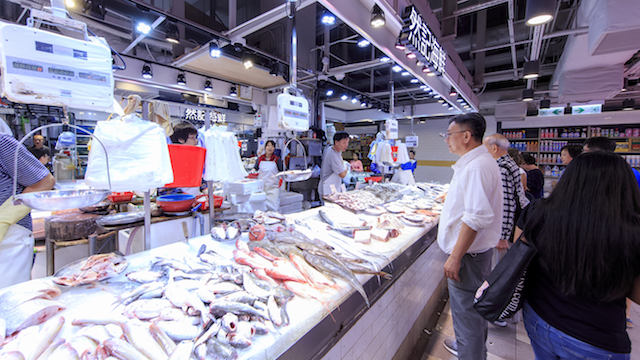
Places to eat
In some of the markets other food-related areas are being paired up to increase custom further. TKO Mall, for example, last month introduced Gateway Food Lane, Link’s first in-mall food court featuring 20-plus eateries.
It is a loop in a space previously occupied by a post office next to the market. It offers fresh prepared foods from a variety of cuisines. Some stalls are merely counters while others have seating and table service.
“It’s a must-go place for foodies to indulge in a diverse range of international gourmet and local hot favourites set in a cosy environment, designed with a contemporary European flair and with murals by local artists,” Link CEO George Hongchoy told the formal opening event.
TKO Mall has relocated its supermarket from downstairs to the top floor, replacing a Chinese restaurant. Where there are supermarkets near the markets, Link reviews their size and location so as to avoid cannibalisation.
Overseas interest
Word of Link’s success with its asset-enhancement program has spread beyond Hong Kong.
“We have lots of inquiries and requests from developers in China – they want to come and visit our markets,” says Kong.
“Two weeks ago we organised a study tour for a Chinese developer to visit our markets.”
Ho says it is particularly satisfying to now see people visiting the markets and using them as a benchmark.
““Now we have established a status of our own.”

